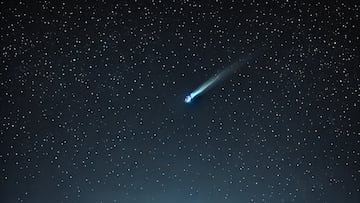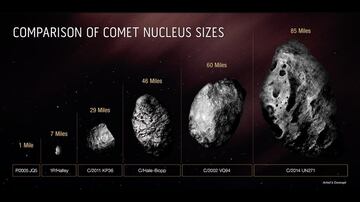SPACE
How and where can I see the “Comet of the Century” in the US? Track C/2023 A3 today
C/2023 A3 has been dubbed a potential “comet of the century” because of its beautiful cometary tail that is visible to the naked eye.

According to Canadian astronomer and comet discoverer David H. Levy, Comet C/2023 A3 (Tsuchinshan-ATLAS), discovered in 2023, will be the “comet of the century.” One of the characteristics that differentiates this from many others is the cometary tail that it is expected to leave behind, which is set to be more prominent than usual.
Why is the comet’s tail so visible?
This phenomenon is due to the fact that after passing the Sun, the dust and ice of this comet will heat up noticeably, causing the ice particles to evaporate and escape quickly into space, transporting with them a large amount of dust that will spread.
Another feature that makes this comet special is its brightness, which can vary depending on where you are. Despite this unpredictability, most researchers believe that “the comet of the century” will be visible to the naked eye. With some luck, it could even surpass the spectacle of the C/2020 F3 (NEOWISE) of summer 2020.
This comet will also be able to be seen from the Northern Hemisphere, which is rather unusual, since the last time an exceptionally bright comet could be visible from these latitudes was in 1997, with the arrival of Comet Hale-Bopp. One of the reasons behind C/2023 A3′s brightness is the size of its core, which is larger than average, with a diameter of between six and 15 kilometers according to some estimates.

How was C/2023 A3, the ‘comet of the century’, discovered?
The comet’s discovery took place in South Africa on February 22, 2023, when the ATLAS telescope detected a new object that would later be proven to be a comet. It was initially named A10SVYR.
It was also captured by the Purple Mountain Observatory telescope on January 9, 2023. Although it was added to the list of objects awaiting confirmation, it was temporarily classified as lost on January 30, 2023. However, shortly after, observations were made again in the Minor Planet Center archives, returning the heavenly body to the spotlight.
What application lets you track C/2003 A3, the ‘comet of the century?’
In order to check the location of C/2003 A3 you will only need to download the Sky Tonight application. After downloading, open the app and press the magnifying glass icon; then write “A10SVYR” in the search engine and press the target icon.
When these steps are carried out, the application will show the current location of the comet in the sky. Simply raise the phone and point it towards the sky and follow the white arrow to see its location.
When will the ‘comet of the century’ C/2023 A3 pass by Earth and when is the best time to see it?
After passing closer to the sun in recent months, the comet has had greater visibility from late September in the northern hemisphere. The comet’s closest approach to Earth will occur on Oct. 12, when it is expected to shine its brightest.
Where did the name of the comet come from?
The letter C explains that it is a non-periodic comet. This type of comet comes from the Oort cloud and can pass through the Solar System once or take 200 to thousands of years to orbit the Sun.
Meanwhile, 2023 A3 indicates that it was discovered in 2023, specifically in the first half of January (comet nomenclature that corresponds to the letter A). It is the third object of this type discovered in that period.
Finally, Tsuchinshan-ATLAS refers to the telescopes of the Purple Mountain Observatory and the Asteroid Impact Warning System (ATLAS).